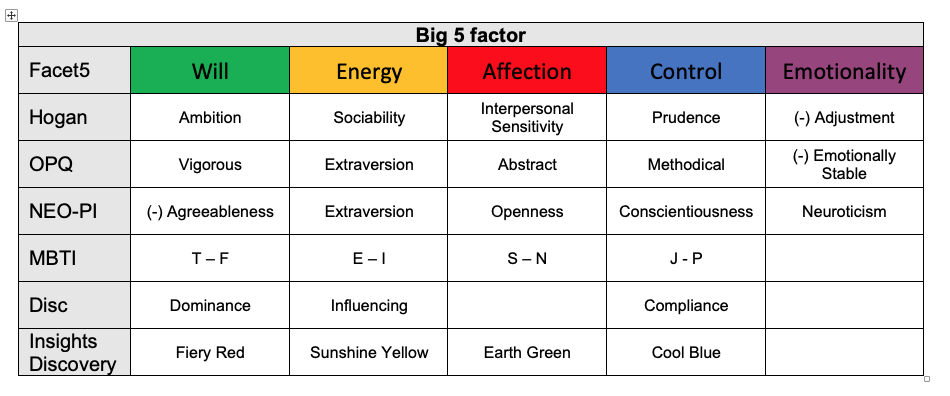Big Five model
Facet5 personality questionnaire
The Facet5 personality questionnaire is based on the Big Five model. This model is considered by most personality psychologists to be the best available model to describe personality.
The Big Five model is the end result of much theoretical research to categorize human personality traits. After many studies in multiple countries and languages, scientists finally arrived at five basic personality traits. The term was coined by American Lewis Goldberg in 1981. These five traits can be represented for each person on a scale ranging between two opposite extremes.

So are all personality questionnaires based on the Big Five model?
The overview below lists the most commonly used personality questionnaires in the Netherlands. They measure the following aspects of the Big Five model:
Notice in this table that the top questionnaires are all based on the Big Five model. For the other questionnaires, they do not provide a complete picture of personality and are based on outdated or unvalidated models. Moreover, Facet5 and the other Big Five personality questionnaires are so-called trait-based questionnaires: scores on the five factors are represented on a continuum. This is in contrast to so-called “type-based” personality questionnaires, such as MBTI and Insights, in which a person is given a specific type. Someone is either introverted or extroverted, or yellow or red.
Personality test or personality questionnaire?
There is a fundamental difference between a test and a questionnaire. You can pass or fail a test. For testing intellectual abilities, an ability test is appropriate. Answers are right or wrong. However, personality, by definition, is neither right nor wrong. Based on the answers to a personality questionnaire, a person is at a certain point on a dimension. If this person possesses more or less of a certain trait, then this leads to a certain preferred style. Facet5 is thus a personality questionnaire.


